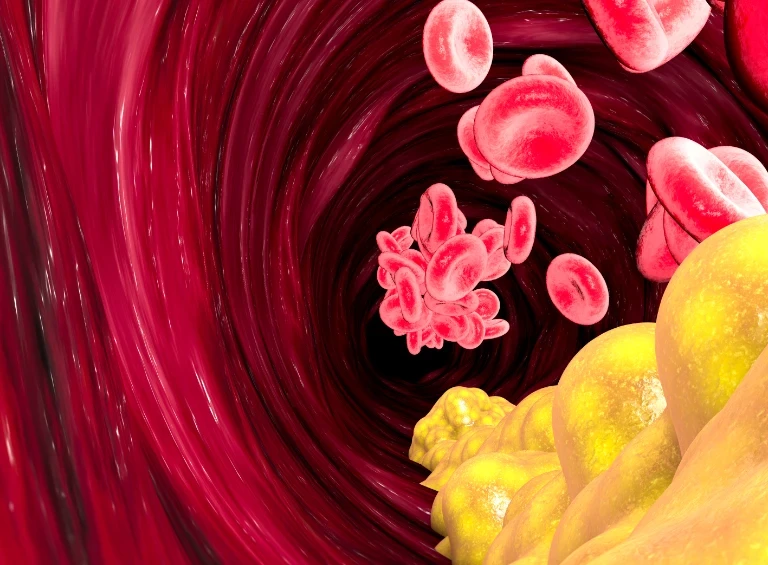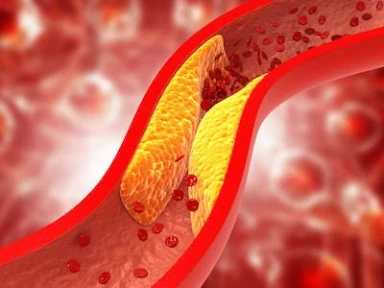Prospective evaluation of lipid management following acute coronary syndrome in Saudi Arabia
Among post-ACS patients from Saudi Arabia:
- A large proportion of patients did not achieve target LDL-C reduction ≥50% and levels <55 mg/dL, as recommended by 2019 ESC/EAS guidelines1
- All patients were prescribed statins and a very small proportion of patients were prescribed add-on LLT. Additionally, a small proportion of patients were on statins pre-ACS
- Gaps in dyslipidemia management and patient education remain despite availability of updated lipid management guidelines
Why This Matters
- The management of dyslipidemiapost-ACS is essential for secondary prevention of CV events
- The global Acute Coronary Syndrome Management (ACOSYM) study reportedthe gap in lipid management post-ACSin non-Western European patients2
- Despite the efficacy of available LLTs,data on patients attaining LDL-C goals are limited and suboptimal in Saudi Arabia
- This study identified the scenario of LDL-C management and the implementation of LLTs for post-ACS Saudi Arabian patientsin real-world clinical practice
Study Design
The ACOSYM was a prospective, multicenter, observational registry evaluating LDL-C control in patients within 6 months after hospitalization following ACS
Inclusion Criteria
- Age ≥18 years
- ≤12 weeks of hospitalization for ACS
- Diagnosis of ACS, defined as any group of clinical symptoms compatible with:
- STEMI
- NSTEMI
- UA
Study Objectives
- Primary objective: Proportion ofpost-ACS patients reaching the four LDL-C goals (<130, <100, <70, and <50 mg/dL) at 6 months
- Secondary objectives:
- LLTs prescribed to patients with ACS
- Proportion of statin-intolerant patients
- Potential barriers to achievingLDL-C targets
- Ad hoc analysis: The 2019 ESC/EAS guidelines’ recommendation of achieving LDL-C reduction ≥50% and LDL-C levels <55 mg/dL
Key Results
- Of 201 eligible patients (mean age, 54.4 ±11.1 years), 126 (62.7%) patients were assessed for primary outcome as they had ≥1 LDL-C measures available during the follow-up period
- LDL-C levels decreased from 115.8 ±46.5mg/dL at baseline to 69.0 ± 33.4 mg/dL at target achievement assessment (P<0.001)
- LDL-C levels were reduced by 39.2% ± 29.5% at 3 months (P<0.001) and by 31.9% ±37.5% at 6 months (P<0.001)
- At target achievement assessment:
- 62.6% of patients had achievedLDL-C level decrease ≥50%
- 42.9% had LDL-C levels <55 mg/dL
Proportion of patients on LLT:
- Only 28.9% were takingstatins pre-ACS
- Only 8.5% were prescribedother LLT at discharge
Patient perception about ACS:
- A large proportion of patients (43.7%) reported never worryingabout the risk of ACS recurrence
- 68.6% do not associatehigh cholesterol levels withincreased risk of ACS
Majority of patients were prescribed high-intensity statins and LDL-C levelsdecreased consistently. However, 57.1% of patients still had LDL-C levels >55 mg/dL at LDL-C goal assessment
Limitations
- The small sample size does notrepresent the entire Saudi Arabianpost-ACS patients population
- No data were collected on dietary measures and lifestyle modifications implemented post-ACS to mitigate subsequent CV risks
Recommendation
- A prospective country-specific program is required to assess the current lipid management approaches and the scope of improvement
ACOSYM, acute coronary syndrome management; ACS, acute coronary syndrome; CV, cardiovascular; ESC/EAS, European Societyof Cardiology/European Atherosclerosis Society; LDL-C, low-density lipoprotein cholesterol; LLT, lipid-lowering therapy; NSTEMI,non ST-elevation myocardial infarction; STEMI, ST-elevation myocardial infarction; UA, unstable angina.
- Mach F, et al. 2019 ESC/EAS Guidelines for the management of dyslipidaemias: lipid modification to reduce cardiovascular risk.EurHeart J. 2020;41(1):111-188.
- NavarAM, et al. Prospective evaluation of lipid management following acute coronary syndrome in non-Western countries.Clin Cardiol. 2021;44(7):955–962.
ArafahMR, et al. Prospective evaluation of lipid management following acute coronary syndrome in Saudi Arabia. Saudi Med J. 2023;44(6):570-579.




